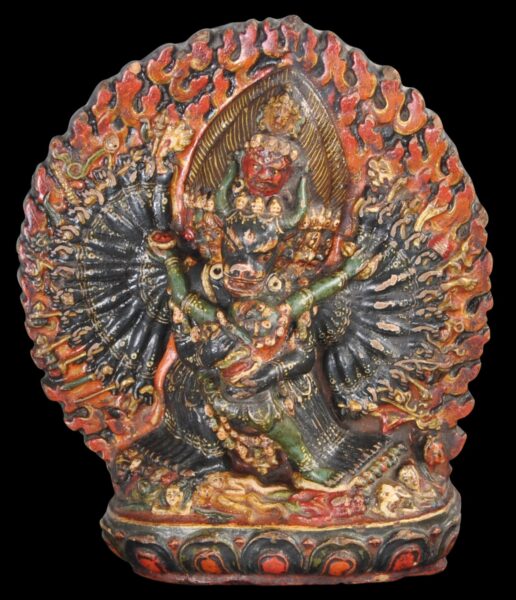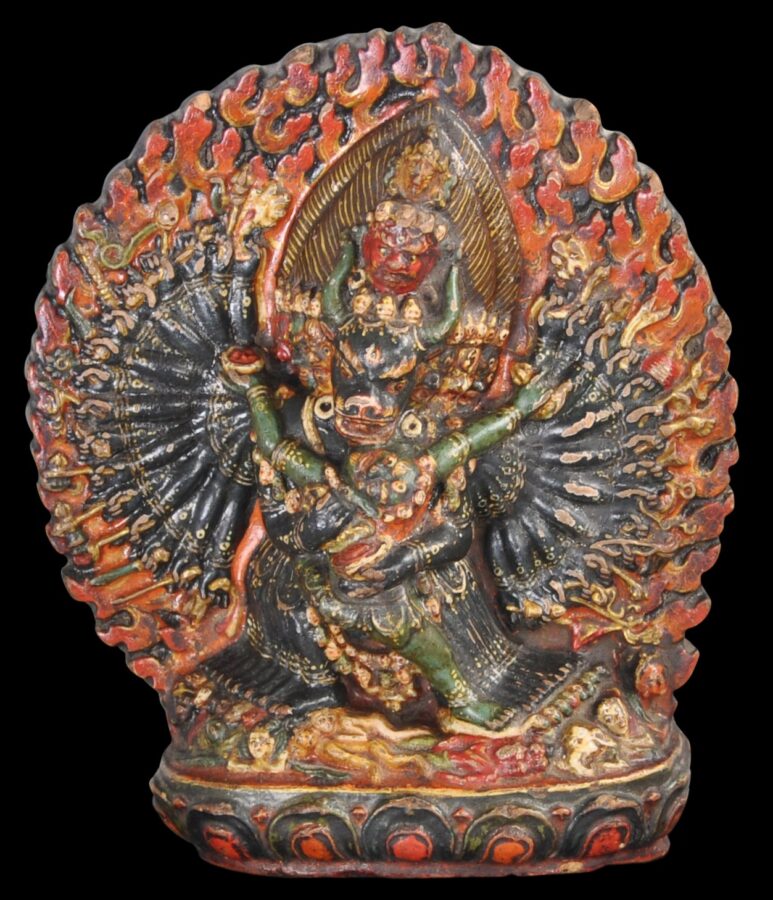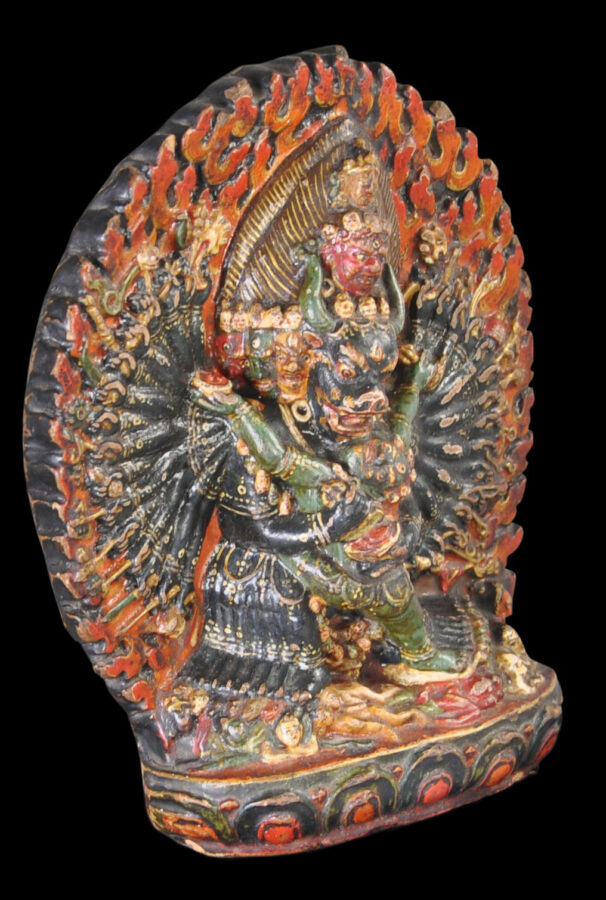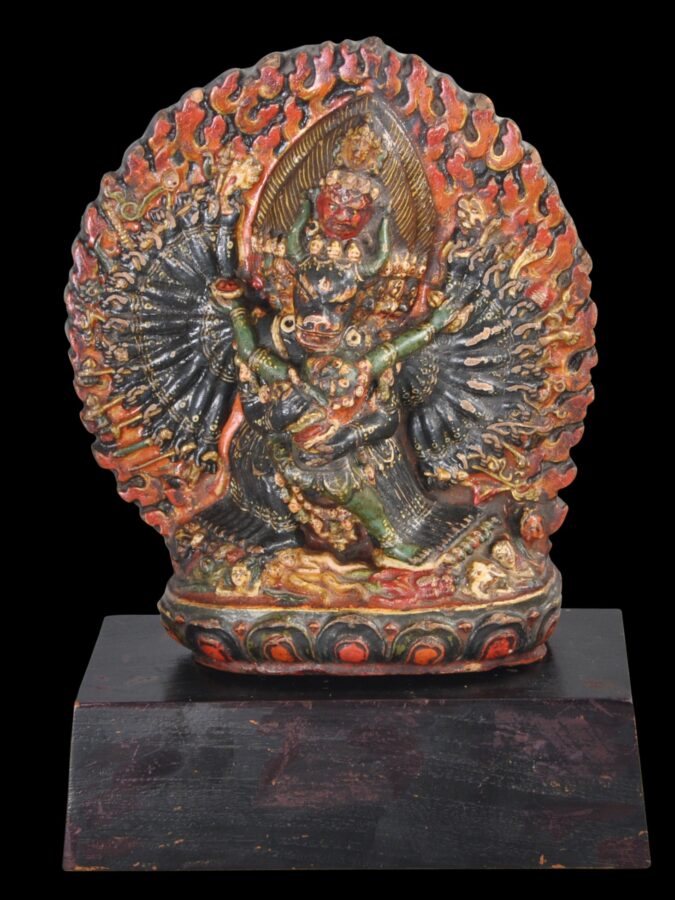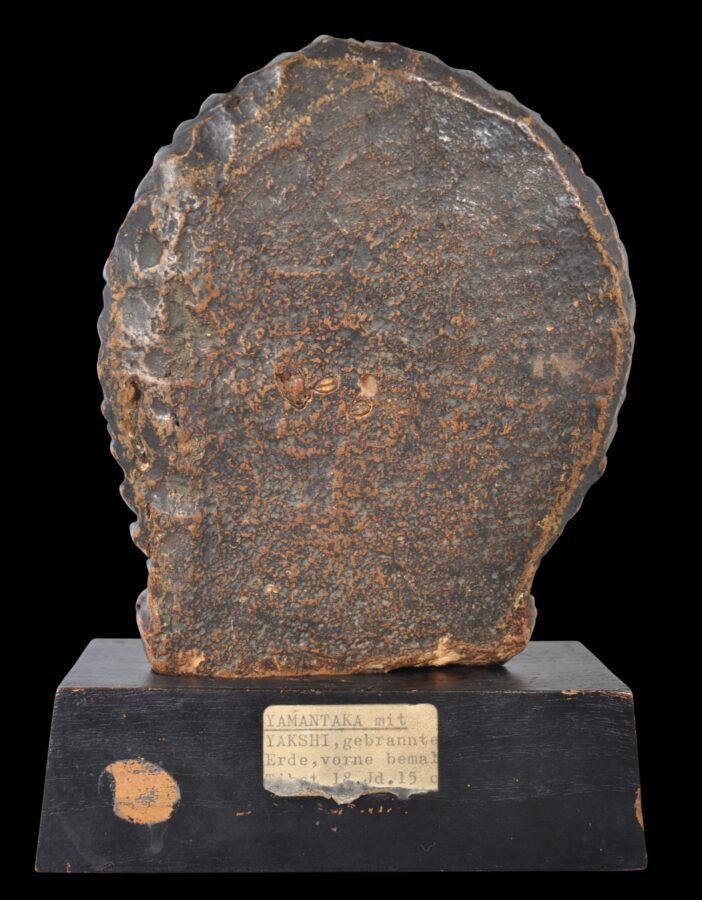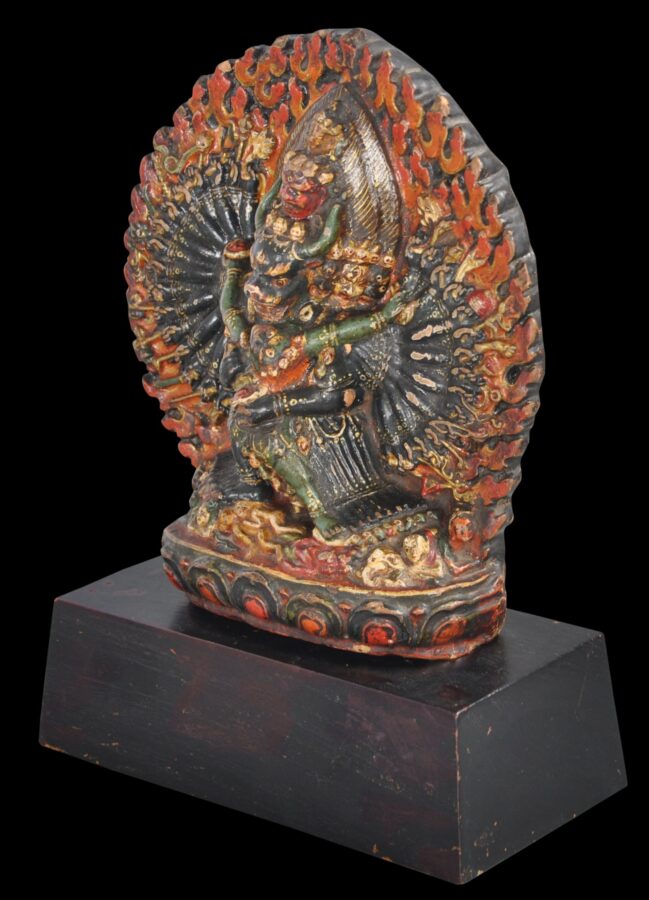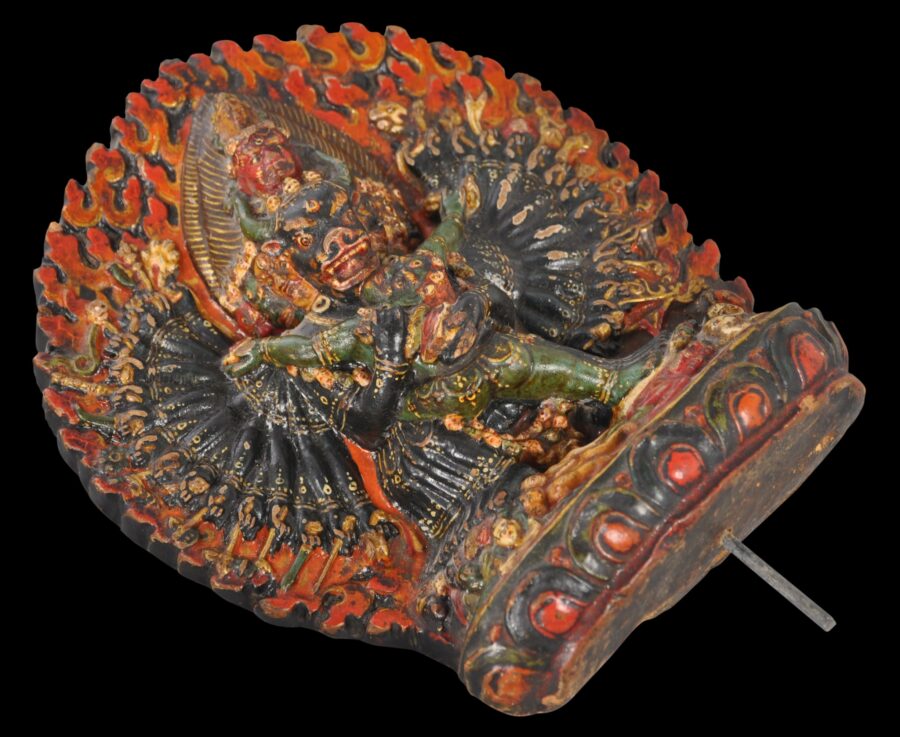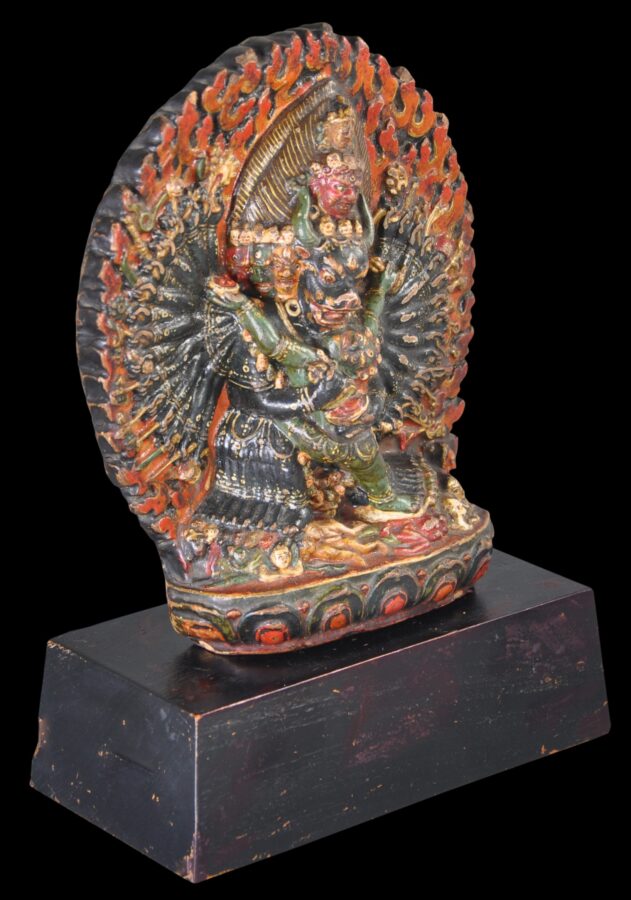The central figure of this image is Vajrabhairava (‘Terrible Vajra’) who represents compassion in its fierce or angry form. The terracotta is decorated in polychrome and gold leaf.
Vajrabhairava is the most popular tantric manifestation of Manjushri and was the most favoured protective wrathful deity of Tibet’s important Drepung monastery and for the Gelugpa sect in general.
Vajrabhairava has nine faces – the principal one which is a yak’s head and the highest one is that of Manjushri. Grinning skulls form a tiara over many of the heads. He has 34 arms, each of which holds a weapon, and 16 legs each of which symbolise the 16 modes of emptiness. He is shown with straightened legs, embracing his fearsome, corpse-like consort Vajravetali. Behind the couple burn the orange-red flames of wisdom. Vajrabhairava’s arms and legs are decorated in midnight blue. Vajravetali, on the other hand, is coloured in green to suggest her decomposing flesh. She also holds a skull cup filled with bloodied flesh. The two trample many dead bodies of humans and animals and, by convention, Hindu deities – indeed a small head of a white elephant can be seen in the lower right. Possibly this is intended to be Ganesh. The benevolence of all this apparent malevolence is destruction of death itself, and accordingly, Vajrabhairava sometimes is also called Yamantaka, or the defeater of death – a deity that can end the endless cycle of rebirth and provide a path to nirvana.
The image here is in fine condition for its age. There are some relatively minor losses to the polychrome as might be expected, but otherwise there are no chips or repairs. The image has a custom-made wooden stand from an early collection. To the reverse of this is an old collection label in German which says in part that the image is of Yamantaka, is from Tibet and dates to the 18th century.
References
Berger, P., & T. Tse Bartholomew, Mongolia: The Legacy of Chinggis Khan, Thames & Hudson, 1995.
Linrothe, R., & J. Watt, Demonic Divine: Himalayan Art and Beyond, Rubin Museum or Art/Serindia Publications, 2004.
Meinert, C. (ed.), Buddha in the Yurt: Buddhist Art from Mongolia, Vols 1& 2, Hirmer, 2011.
Pal, P., Art of Tibet, Los Angeles County Museum of Art, 1990.
Pal, P., Himalayas: An Aesthetic Adventure, The Art Institute of Chicago, 2004.
Rawson, P., Sacred Tibet, Thames & Hudson, 1991.


